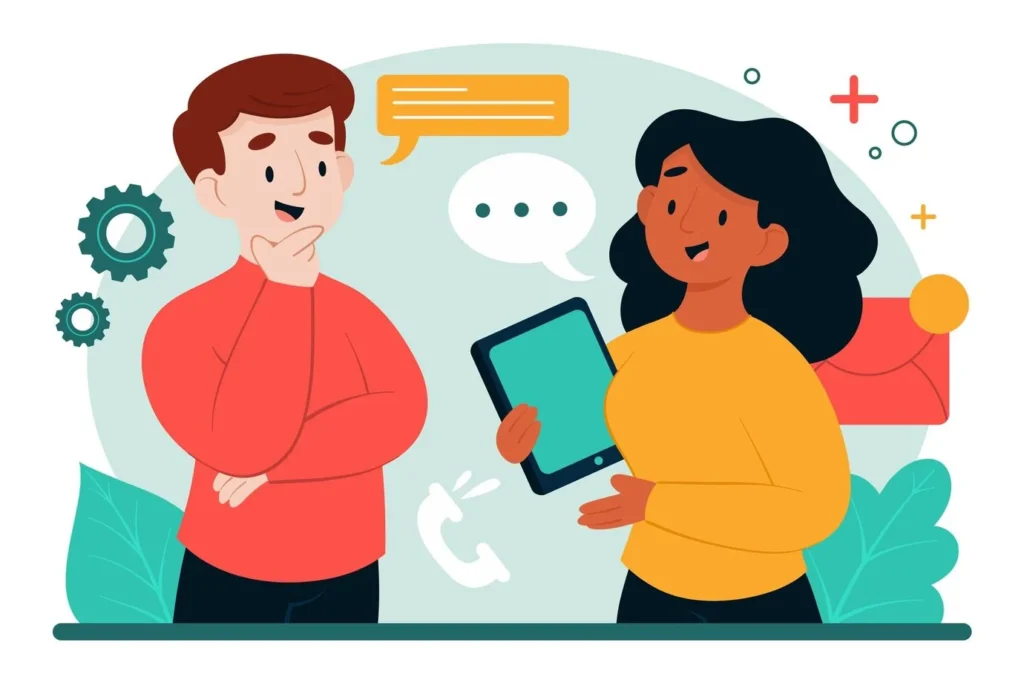-
129, Block-A Bangur Avenue, Mousumi Appartment, Kolkata 700055
129, Block-A Bangur Avenue, Mousumi Appartment, Kolkata 700055

Understanding the science behind communication in relationships can help improve emotional bonds. Discover how nonverbal cues shape interactions and build stronger connections.
When we think about communication in relationships, we often focus on words. However, studies suggest that nonverbal cues account for up to 93% of communication, shaping how we understand and connect with others. From facial expressions to body language, nonverbal signals often speak louder than words.
Understanding these cues can help strengthen relationships, prevent misunderstandings, and improve emotional bonds. Whether in romantic relationships, friendships, or professional settings, mastering nonverbal communication enhances trust and connection.
This article explores the science behind communication in relationships, the different forms of nonverbal signals, and how you can use them effectively.

Nonverbal communication is the exchange of information without words. It includes gestures, facial expressions, eye contact, tone of voice, and even physical space. These cues often reveal emotions, intentions, and attitudes more accurately than spoken language.
Some key ways nonverbal communication impacts relationships include:
✔ Building Trust and Emotional Intimacy – Consistent body language and eye contact reinforce sincerity and strengthen emotional bonds.
✔ Resolving Conflicts – Calm posture, soft gestures, and an open stance can diffuse tension and prevent arguments.
✔ Expressing Affection – A warm touch, a reassuring nod, or a genuine smile can convey love and support.
✔ Detecting Deception – Inconsistent words and body language, such as avoiding eye contact or fidgeting, can indicate dishonesty.
✔ Understanding Unspoken Feelings – A person may say they’re “fine,” but their crossed arms and tense expression may indicate otherwise.
Recognizing and interpreting nonverbal cues correctly can significantly improve communication in relationships and help in developing stronger emotional connections.

Facial expressions are one of the most powerful indicators of emotions. They transcend cultural and language barriers, making them a universal form of communication.
Understanding facial expressions can help interpret your partner’s emotions even when they’re not speaking.
Eye contact plays a crucial role in establishing connection and trust. It conveys attention, sincerity, and confidence.
Maintaining appropriate eye contact enhances communication in relationships and makes conversations feel more personal and meaningful.
Gestures, such as hand movements and body posture, amplify verbal messages and provide additional meaning.
Using positive gestures helps convey warmth and reinforces the message being communicated.
The way something is said often holds more weight than the actual words used. Tone, pitch, speed, and volume all impact how a message is perceived.
Being mindful of your tone can help prevent misunderstandings and enhance emotional connection.
Touch is a fundamental aspect of human connection. It can provide comfort, convey affection, and strengthen relationships.
However, it’s essential to be aware of personal boundaries, as comfort levels with touch vary among individuals.
The physical distance between individuals, also known as proxemics, affects interactions.
Recognizing and respecting personal space helps foster comfortable and healthy relationships.
Enhancing nonverbal communication skills can lead to more fulfilling and understanding relationships. Here are some tips:
✔ Be Aware of Your Own Nonverbal Cues – Pay attention to your facial expressions, gestures, and tone when communicating.
✔ Observe Others’ Body Language – Notice subtle changes in expressions or posture to understand emotions better.
✔ Practice Active Listening – Nod occasionally, maintain eye contact, and use verbal affirmations like “I understand” to show engagement.
✔ Match Your Words with Your Actions – Ensure your body language aligns with what you’re saying to avoid mixed signals.
✔ Use Open Body Language – Uncrossed arms, relaxed posture, and a genuine smile make you appear more approachable and trustworthy.
✔ Respect Cultural Differences – Some gestures and nonverbal cues may have different meanings across cultures, so be mindful of context.
By making small adjustments, you can significantly improve communication in relationships and create deeper, more meaningful connections.

Yes. Nonverbal cues can sometimes be misread, leading to misunderstandings. This is why it’s essential to consider the context and observe multiple signals before drawing conclusions.
Signs of deception include avoiding eye contact, fidgeting, inconsistent facial expressions, and nervous hand movements. However, body language alone isn’t foolproof—verbal cues should also be considered.
In long-distance relationships, video calls help convey facial expressions and gestures, reducing misunderstandings. Additionally, written communication (texts and emails) should be complemented with emojis or voice notes to express emotions better.
Absolutely! Being more aware of nonverbal cues helps you respond more empathetically to your partner’s needs, enhancing emotional intimacy and trust.
Maintain good posture, use open gestures, make consistent eye contact, and avoid crossing your arms. A warm smile and firm handshake can also convey confidence.
Understanding the science behind nonverbal communication is key to fostering stronger, healthier relationships. By paying attention to body language, facial expressions, tone of voice, and physical touch, you can build deeper connections and avoid unnecessary misunderstandings.
Whether it’s through subtle eye contact, a reassuring touch, or an open posture, nonverbal cues play a critical role in everyday interactions.
If you want to enhance your communication skills or seek professional guidance, the best psychological counselor in Kolkata can provide expert insights and strategies. Improving nonverbal communication takes time and practice, but the rewards—stronger relationships, deeper connections, and better understanding—are well worth the effort.